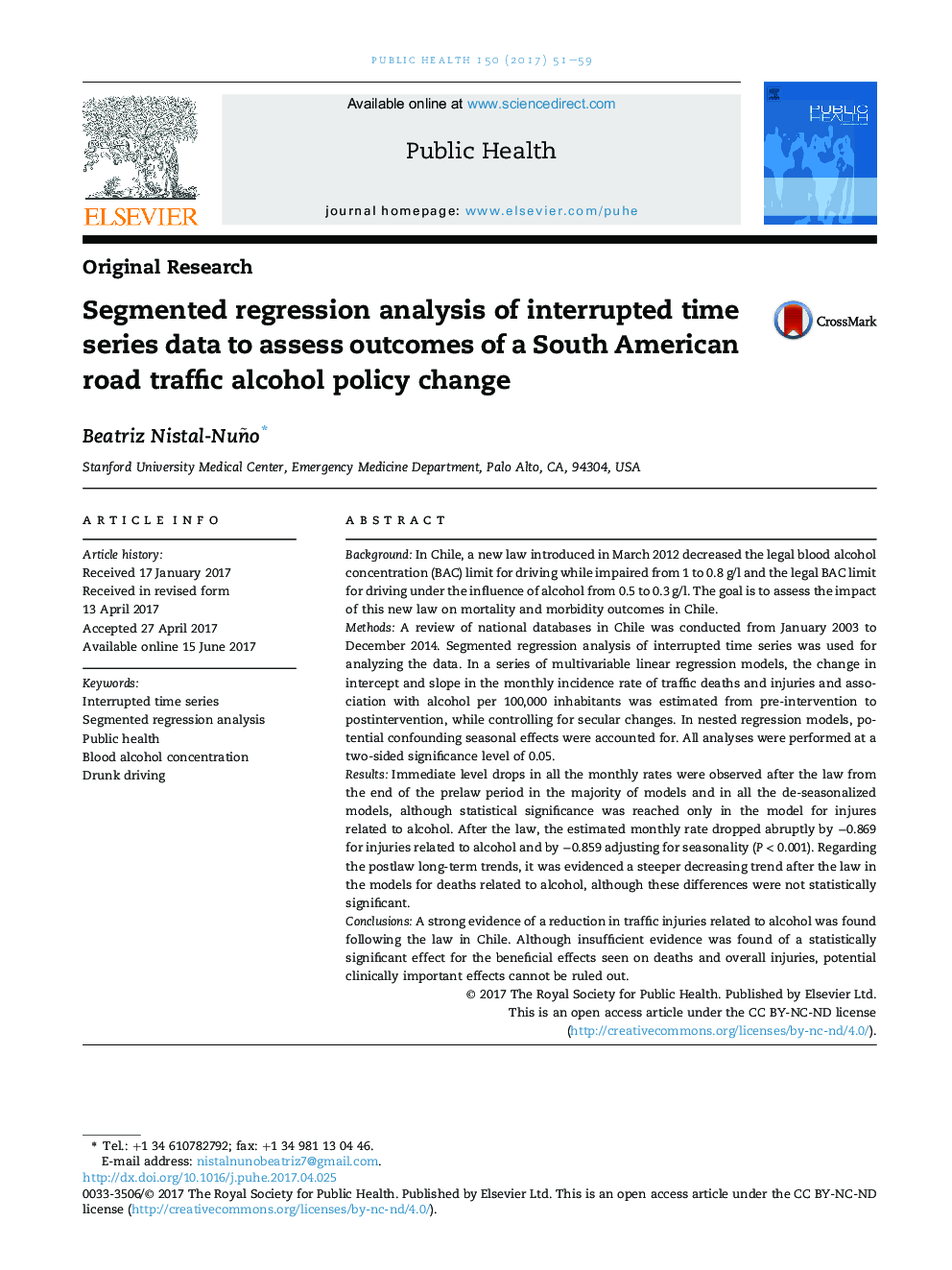| کد مقاله | کد نشریه | سال انتشار | مقاله انگلیسی | نسخه تمام متن |
|---|---|---|---|---|
| 5122695 | 1487193 | 2017 | 9 صفحه PDF | دانلود رایگان |
- Immediate drops in fatality and injury rates and alcohol-related occurred after the law from the end of the pre-law period.
- This was consistent in all the de-seasonalized models. Statistical significance was reached for alcohol-related injuries.
- It was observed a steeper decreasing postlaw long-term trend compared to before the law for alcohol-related death rates.
- In the other models the post-law trends remained stable with no significant changes compared to the pre-law period.
- This study might enhance policy programs in Chile, and will be helpful for other countries coping with drunk driving.
BackgroundIn Chile, a new law introduced in March 2012 decreased the legal blood alcohol concentration (BAC) limit for driving while impaired from 1 to 0.8Â g/l and the legal BAC limit for driving under the influence of alcohol from 0.5 to 0.3Â g/l. The goal is to assess the impact of this new law on mortality and morbidity outcomes in Chile.MethodsA review of national databases in Chile was conducted from January 2003 to December 2014. Segmented regression analysis of interrupted time series was used for analyzing the data. In a series of multivariable linear regression models, the change in intercept and slope in the monthly incidence rate of traffic deaths and injuries and association with alcohol per 100,000 inhabitants was estimated from pre-intervention to postintervention, while controlling for secular changes. In nested regression models, potential confounding seasonal effects were accounted for. All analyses were performed at a two-sided significance level of 0.05.ResultsImmediate level drops in all the monthly rates were observed after the law from the end of the prelaw period in the majority of models and in all the de-seasonalized models, although statistical significance was reached only in the model for injures related to alcohol. After the law, the estimated monthly rate dropped abruptly by â0.869 for injuries related to alcohol and by â0.859 adjusting for seasonality (PÂ <Â 0.001). Regarding the postlaw long-term trends, it was evidenced a steeper decreasing trend after the law in the models for deaths related to alcohol, although these differences were not statistically significant.ConclusionsA strong evidence of a reduction in traffic injuries related to alcohol was found following the law in Chile. Although insufficient evidence was found of a statistically significant effect for the beneficial effects seen on deaths and overall injuries, potential clinically important effects cannot be ruled out.
Journal: Public Health - Volume 150, September 2017, Pages 51-59
